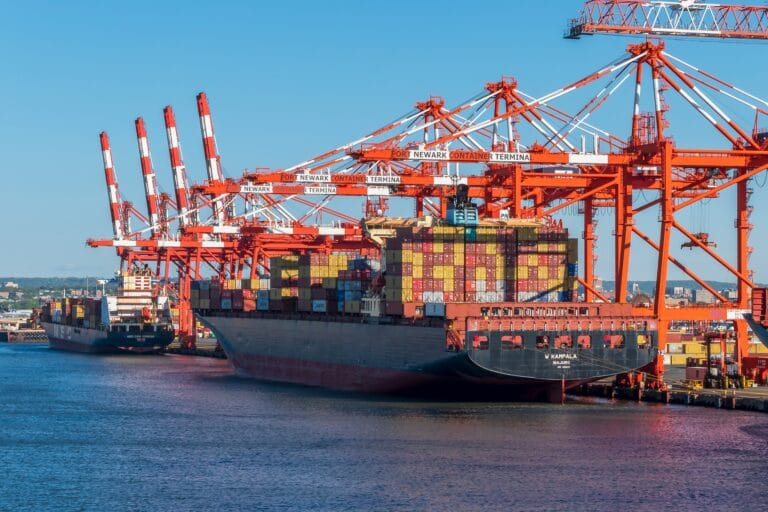American dockworkers are planning to strike at 36 ports on the US East Coast and the Gulf of Mexico from 1 October and, if the strike goes ahead, it will have an immediate and significant impact on the flow of goods (ranging from cars to food and beverages) between the USA and the UK.
A strike by US dockworkers, known as longshoremen in the US, now looks increasingly likely. It will immediately disrupt the US-UK flow of goods including vehicles, domestic appliances, electronics, cosmetics and plastics such as toys. While it could take up to six days to recover from a single day’s strike, action lasting more than a fortnight could impact Christmas and beyond.
The strike is being organised by the International Longshoremen’s Association (ILA) union, which represents port workers across the East and Gulf Coasts. The ILA is demanding sizable wage increases for its members as well as protection from loss of jobs through automation.
The ILA says its strike will affect ports from Maine to Texas and could involve up to 45,000 workers. Around 60% of all US shipping traffic could be caught up in the strike.
For example, the Port of New York and New Jersey is set to be disrupted by the strike. In 2022, it became America’s largest port in terms of volumes handled. 80% of imports destined for use in the US use the port and in 2023 alone it handled 7.8 million TEU containers. The key ports of Houston, Texas and Savannah, Georgia, are also likely to be impacted by strike action.
Already, many shipping companies sailing between the UK/EU and the US are diverting cargo to West Coast ports such as Long Beach and Los Angeles to ensure containers aren’t trapped. Long Beach has just had its busiest-ever month as shipping companies and exporters hurriedly divert.
Many UK-US products rely on direct routes across the Atlantic and they will be heavily impacted. For example, depending on the UK port, it typically takes 12-15 days for a sailing between the UK and New York. By contrast, a typical shipment between the UK and Los Angeles takes around 30-39 days and is likely to be more expensive.
One major problem is that container ships leaving the UK now will arrive in the US days after the strike has started, if it goes ahead. Critically, shipping lines may not be able to divert vessels bound for the US East Coast to West Coast ports after 1 October, as the ILA has made it clear it would picket such a move.
UK manufacturers and exporters could have their products stuck in US ports just as the run-up to the Christmas peak gets underway, while UK importers will be impacted by the delay of many US-manufactured products.
Better news is that most smaller items, such as parcels, are unlikely to be caught up in the strike. It’s only once a shipment weighs more than around 100-500kg that shipping by sea becomes potentially a cheaper option than airfreight. That means the strikes are unlikely to significantly impact courier express parcel deliveries such as typical Parcelhero services to and from the US East Coast.
Mostly, it will be larger, heavier goods, which cannot be airfreighted, that will be hit by delays. However, UK businesses should also be aware of a potential impact of the restrictions on budget, low-urgency “surface mail”, the term used by freight companies to describe mail transported by land and sea.





